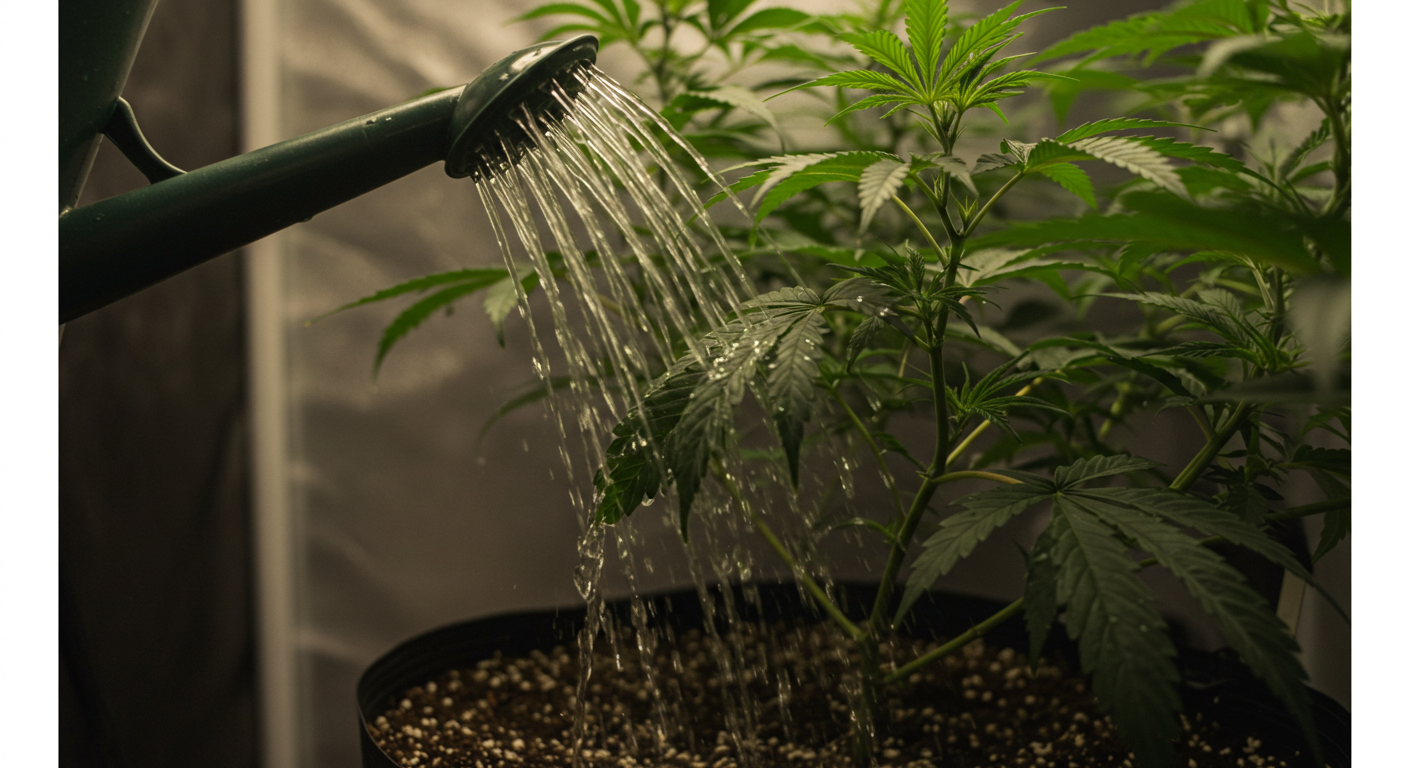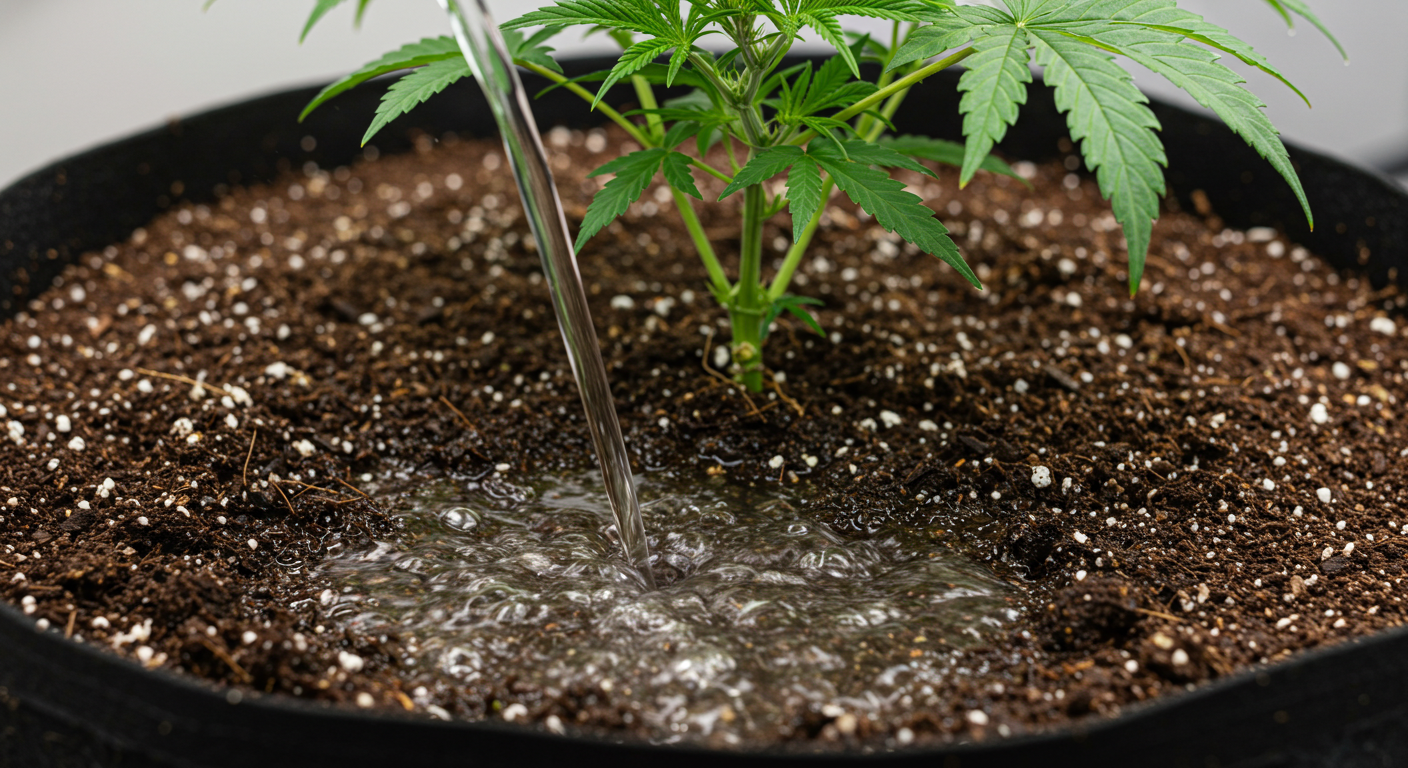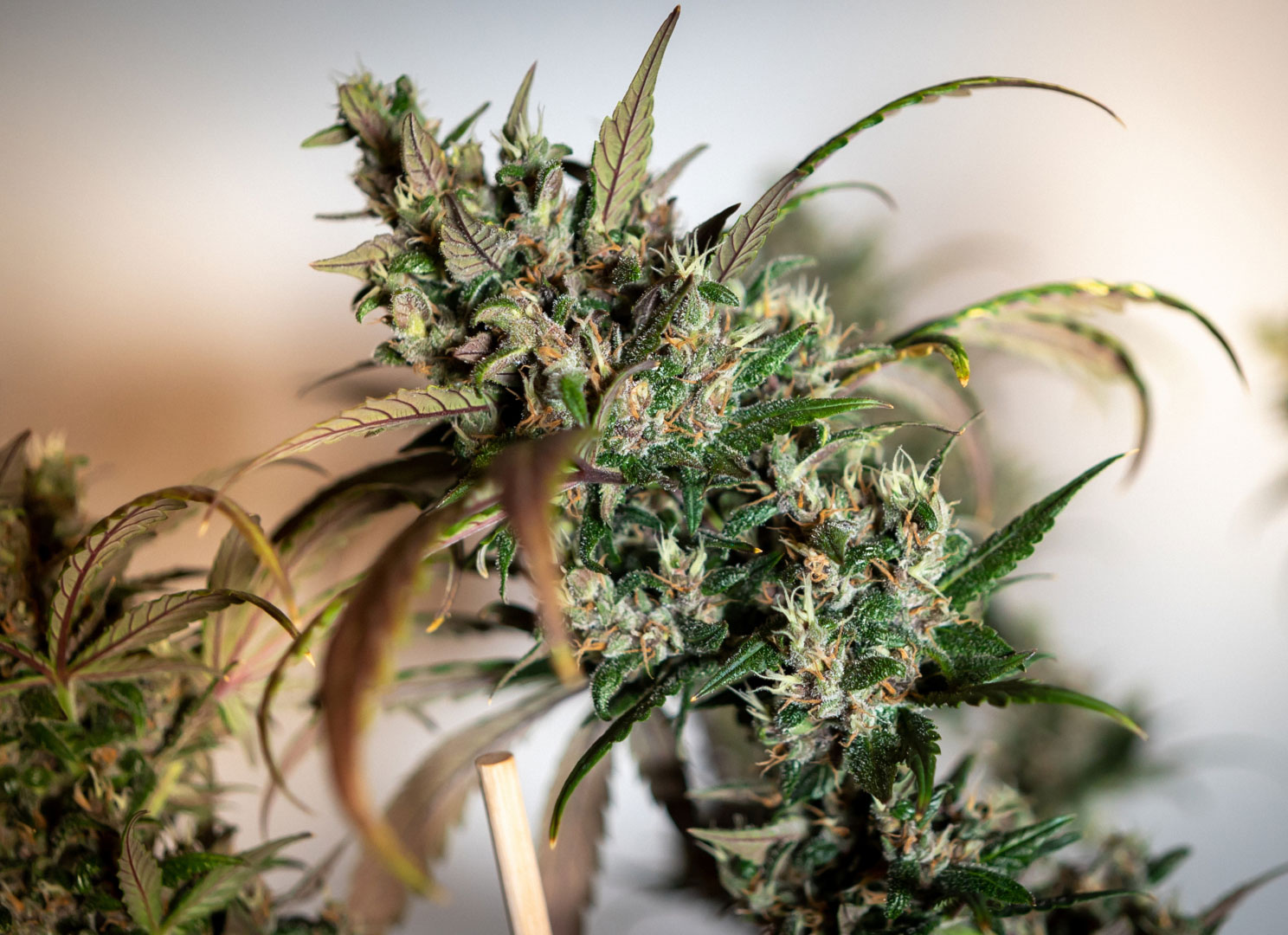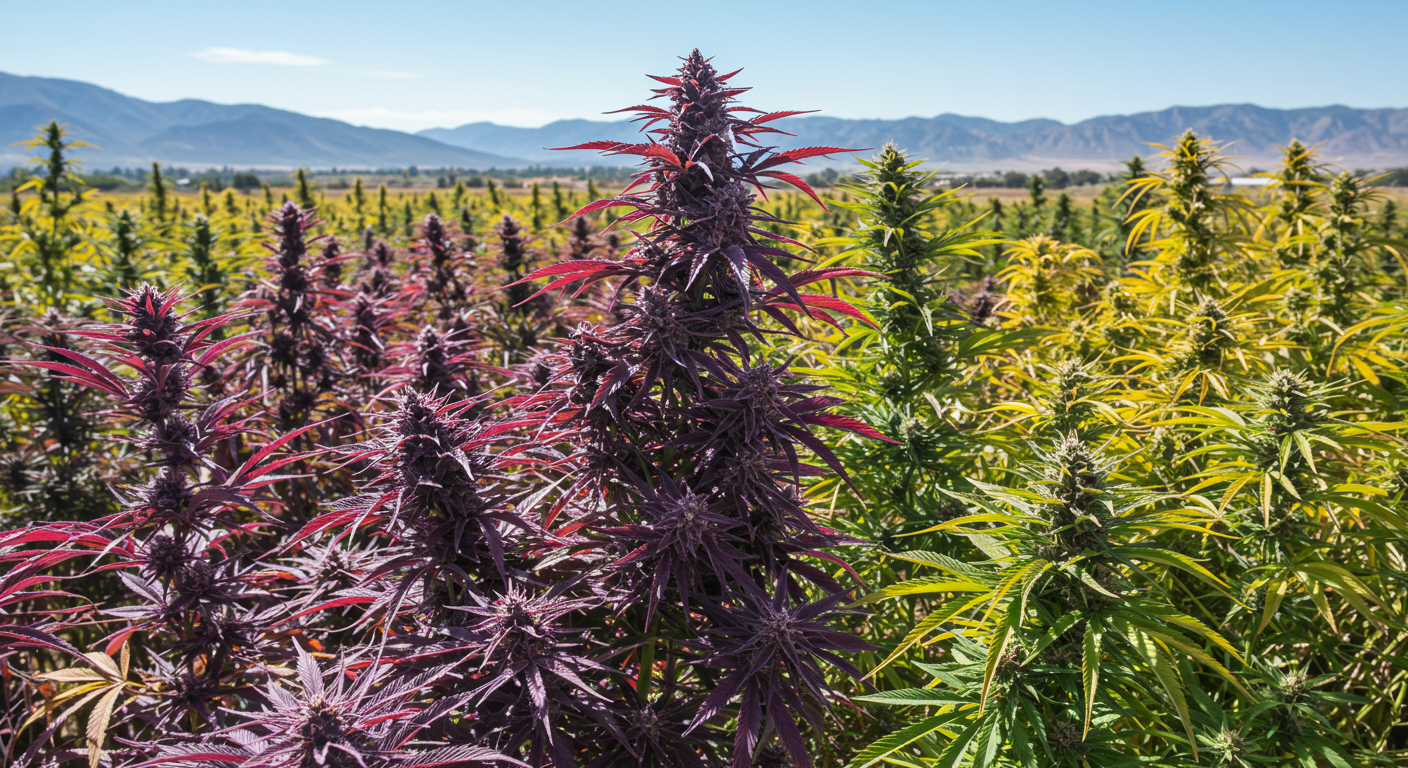
How Often Should I Water Cannabis?
How Often Should I Water Cannabis?
A complete, brand-neutral Weedth guide for beginners and improvers
Watering is not a calendar event. It is a conversation between your plant, its roots, the medium, the pot, and the environment. The right rhythm changes as the plant grows, the weather shifts, and your medium dries back. Below is a practical way to “feel” the right timing, with clear ranges to start from and exact checks so you never guess.
The short answer first
Use these as starting ranges, then refine with the checks that follow.
- Soil, seedlings
Solo cup or small pot: every 1 to 3 days, small sips around the stem. - Soil, veg
7 to 15 L pot indoors: every 1 to 3 days.
20 to 40 L pot outdoors: every 2 to 5 days in mild weather, more often in heat waves. - Soil, flower
10 to 20 L pot indoors: daily or every other day.
Large outdoor containers or in-ground: deep soak every 3 to 7 days, adjusted for heat and wind. - Coco coir (note for coco growers)
Keep evenly moist, not bone dry. Often once daily in early veg, 2 to 4 small irrigations per day in late flower. - Rockwool or hydroton (note for hydro growers)
Frequent short pulses or recirculating flow; do not allow blocks to dry out.
Now the part that makes you consistent: the five checks.
The five checks that tell you it is time
- Top-layer feel
In soil, wait until the top 2 to 3 cm feels dry and looks lighter in color. - Pot-weight test
Lift the pot when freshly watered and remember that “full” weight. Water again when it feels noticeably lighter. This is the most reliable beginner habit. - Finger test
Push a clean finger into the medium to the first knuckle. If it is dry there in soil, it is time. In coco, aim for “cool and slightly damp,” not dry. - Leaf language
Slight downward droop with firm petioles can mean “thirst soon.” Heavy, swollen leaves with a dull look usually mean “too wet.” Always read new growth first. - Time since last runoff
In salt-based programs, water to light runoff regularly to avoid buildup. In living soils, avoid heavy runoff and rely on topdresses plus thorough wets.
If three of five checks say “water,” do it.
How to water correctly
- Go slow and in circles. Pour around the plant in a widening ring, then repeat in passes. Slow water avoids channels and saturates evenly.
- Aim for complete coverage. In soil with bottled nutrients, finish with about 10 to 20 percent runoff to clear salts. In living soil, stop before runoff to keep nutrients in the pot.
- Avoid extremes. Roots want water and oxygen at the same time. “Constant soup” starves them of air, “bone-dry swings” prune fine roots.
- Water temperature. Use room-temperature water, roughly 18 to 22 °C. Very cold water can shock roots.
- Mulch helps. A thin mulch layer reduces evaporation and evens out dry-backs, especially outdoors.
What changes the schedule
- Pot size vs plant size. Small plants in big pots dry slowly. Start seedlings in small containers or water only a small “donut” around the stem until roots expand.
- Pot type. Fabric dries faster and keeps oxygen high. Plastic dries slower. Air-pruning pots land in between.
- Medium.
Soil holds water longer and buffers mistakes.
Coco needs more frequent, smaller irrigations.
Rockwool wants frequent pulses and never full dry-backs. - Environment. More light, heat, wind, and lower humidity increase transpiration. Add waterings on hot, bright, windy days.
- Plant stage. Seedlings sip, veg plants drink, flowering plants drink the most. Late flower in dry air can double your indoor watering frequency.
- Outdoor weather. Heat waves, wind spells, and low humidity can turn a 3-day cycle into a daily cycle. Plan to water early morning or in the evening during heat.
Soil, step by step
Seedlings in soil
- Container: 0.25 to 0.5 L starter.
- Method: water a small ring around the stem when the top crust dries.
- Volume: 30 to 80 mL per watering, usually every 1 to 2 days.
- Goal: keep the center lightly moist, edges a bit drier, encourage roots to go searching.
Vegetative soil plants
- Container: 7 to 15 L indoor, 20 to 40 L outdoor.
- Rhythm: every 1 to 3 days indoors, every 2 to 5 days outdoors in mild weather.
- Volume: typically 10 to 20 percent of pot volume per watering, adjusted by your five checks.
- Tip: if the pot still feels heavy on day two, you watered too much last time.
Flowering in soil
- Indoor 10 to 20 L: most growers land on daily or every-other-day.
- Outdoor large pots or ground: deep soak, then allow real dry-back before the next soak.
- Late flower: aim for lower humidity, stronger airflow, and even, thorough wets to avoid dry pockets that invite molds.
Living soil note
- Favor thorough, less frequent wets, minimal runoff, and topdresses.
- Mulch is your friend.
- If the surface becomes hydrophobic, pre-wet gently or use a mild, natural wetting agent so water does not race down the sides.
Coco, in one page
- Keep coco evenly moist, never bone dry.
- Early veg: usually 1 irrigation per day.
- Late veg to mid flower: 2 to 3 smaller irrigations per day.
- Late flower under high light: often 3 to 5 short irrigations per day.
- Always water to light runoff to balance EC.
- pH slightly lower than soil (common range 5.8 to 6.3).
- Because coco breathes more, each feeding can be lighter, but frequency goes up.
Outdoor timing that actually works
- Containers 20 to 40 L. Deep water until you see a touch of runoff, then skip days until the top 3 to 5 cm is dry and the pot is light. In mild weather that is every 2 to 5 days.
- In-ground plants. Slow, deep soak at the drip line. In most soils that means a thorough water every 3 to 7 days, more often in heat or wind.
- Mulch. A few centimeters of straw, leaves, or bark halves evaporative loss and keeps roots cooler.
- Heat waves. Water early morning so plants start full and can handle midday stress. If evenings are cool and still, evening water is fine too.
How much water should I give?
Use this quick heuristic, then adjust with your five checks.
- Containers indoors
Target about 10 to 20 percent of pot volume per full watering in soil.
Example: a 10 L pot gets 1 to 2 L, poured slowly in passes. - Containers outdoors
Similar volumes, but you may go higher in hot, dry weather. - Runoff guidance
Salt-based feeding in soil and coco likes a bit of runoff. Living soil prefers little to none.
If you routinely see puddles on the surface yet the pot still dries slowly, reduce volume per event and water more evenly in passes.
Water quality, simply
- Chlorine usually dissipates if water rests in an open bucket.
- Chloramine does not dissipate easily. If your city uses it, activated carbon filtration helps.
- Hard water can push pH up. If leaves pale while your runoff pH is high, consider adjusting source water or buffering the medium.
- Very soft or RO water often benefits from a little calcium and magnesium.
- pH targets
Soil: roughly 6.0 to 7.0.
Coco: roughly 5.8 to 6.3.
Hydro: medium-specific targets, usually mid-5s to low-6s.
Keep it simple. If new growth looks right and you are not seeing lockout symptoms, your water is probably acceptable.
Overwatering vs underwatering, know the difference
Too wet
- Leaves look heavy and droop from the stem.
- Soil stays dark and cold to the touch.
- Growth slows, fungus gnats appear, lower leaves may yellow.
Fix - Increase dry-back, improve airflow, check drainage holes, consider fabric pots. Do not “rescue” with extra nutrients.
Too dry
- Leaves droop but feel thin and papery.
- Soil is pale and pulling from the pot sides, branches feel weak.
Fix - Re-wet slowly in passes until evenly moist. In hydrophobic soil, pre-wet gently, then finish. Add mulch.
A week-by-week example, soil indoor
Week 0 to 1
Small starter pots, 30 to 80 mL every 1 to 2 days around the stem.
Week 2 to 3
Up-pot. 0.5 to 1 L every 1 to 3 days, guided by the five checks.
Week 4 to 5 (veg)
1 to 2 L every 1 to 3 days in 10 L pots.
Week 6 to 8 (early flower)
1.5 to 2.5 L daily or every other day in 12 to 15 L pots.
Week 9+ (late flower)
2 to 3 L most days, with careful airflow and lower room humidity.
These are starting points. Your environment decides the final number.
Sub-irrigated planters and bottom watering
- SIP systems keep a reservoir under the soil and wick moisture upward. They reduce frequency and can deliver explosive growth.
- Keep the top layer from staying swampy. Let the top few centimeters dry between refills to discourage gnats.
- For classic saucer bottom-watering, let pots drink, then pour off any standing water. Do not let roots sit submerged.
A simple troubleshooting tree
- Leaves droop.
Is the pot heavy or light?
• Heavy: wait, improve airflow, reduce volume next time.
• Light: water now, then review pot size and environment. - Tips burnt or clawing but you water often.
Possible salt buildup.
• In bottled programs: water to runoff for a cycle or two.
• In living soil: stop extra inputs and water thoroughly without runoff. - Pale new growth, pH unknown.
Test pH at the root zone.
• Soil below 6 or above 7 can lock nutrients. Correct gently, then reassess. - Lower leaves yellowing while top stays green.
Normal with age, but also common with overwatering. Check the pot weight and roots’ access to air. - Buds in late flower look stressed on hot days.
Water early, reduce room humidity, increase airflow around the canopy, and consider raising the light slightly.
Frequently asked questions
Can I water on a fixed schedule
For soil, no. Use the five checks. Coco and rockwool can use timers because they prefer frequent, small irrigations and predictable dry-backs.
How do I avoid channeling in dry soil
Pre-wet gently, then water in slow passes. Consider a mild natural wetting agent when soil has gone hydrophobic.
Is runoff always required
Only in salt-based programs where you want to prevent buildup. In living soil, aim for even saturation with little or no runoff.
Morning or evening watering outdoors
Morning fills the plant before heat and wind. Evening is acceptable in cool, dry conditions. Avoid leaving foliage wet overnight in humid climates.
How do light and CO₂ change watering
More photons and added CO₂ raise transpiration and growth. Expect more frequent irrigations.
One printable page
- Use the five checks before every watering.
- In soil, aim for 10 to 20 percent of pot volume per full watering, then adjust.
- Seedlings sip, veg drinks, flower drinks the most.
- Fabric pots dry faster but keep roots oxygenated.
- Mulch outdoors, manage room humidity indoors.
- Salt programs like some runoff, living soil prefers less.
- Soil pH roughly 6.0 to 7.0, coco 5.8 to 6.3.
- Room-temperature water. Avoid “cold shocks.”
- If in doubt, wait a few hours and check again. Plants recover faster from a little thirst than from chronic saturation.
If you master watering, you solve eighty percent of early grow problems. Start with the ranges above, then let your five checks set the rhythm. Within two weeks you will know your pots by feel, and your plants will tell you the rest.
Share this article
Written by : alexbuck
Follow us
A quick overview of the topics covered in this article.
Latest articles
December 24, 2025
December 24, 2025
December 24, 2025
December 24, 2025





